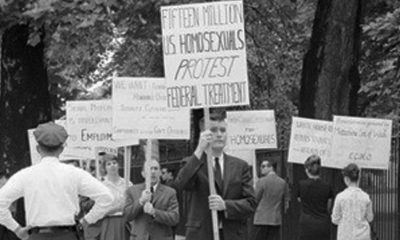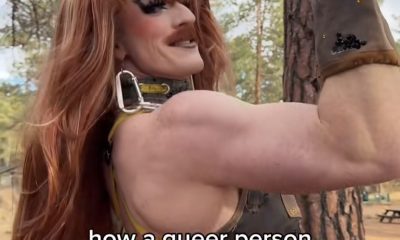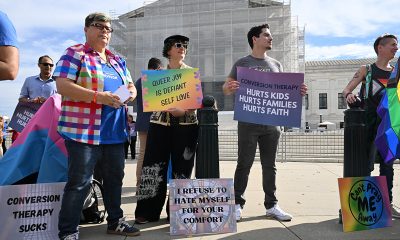Opinions
Social media can be a safe space for LGBTQ youth
Whether on Instagram, YouTube or TikTok, queer youth are able to connect with stories and insight that they not only relate to, but can use to help cope with and resolve their own struggles.
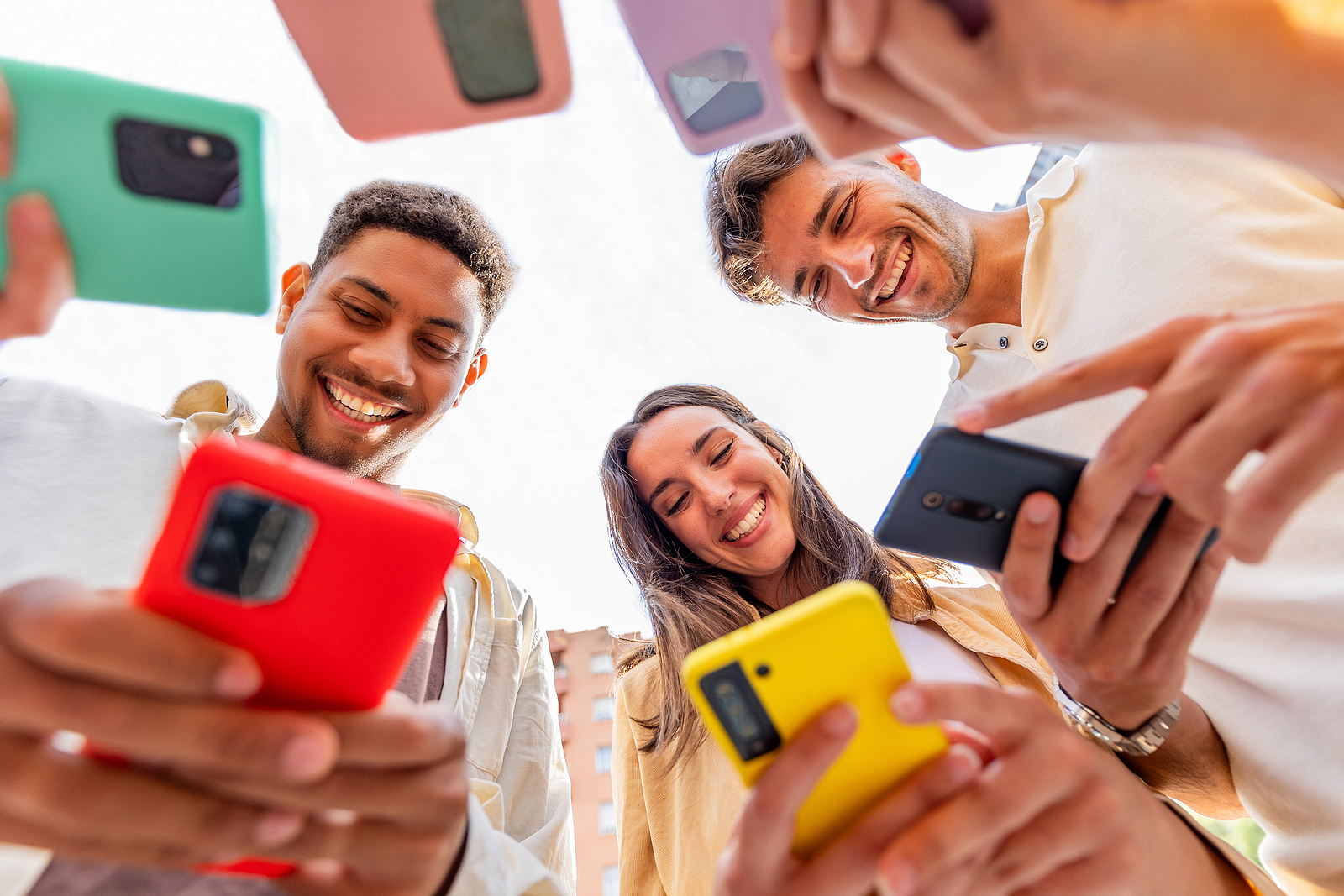
With all the bad press social media gets when it comes to teens, its significant benefits to LGBTQ youth – including relating to others like themselves – can be overlooked, mental health experts and queer teens say.
Members of racial and ethnic groups who have long been underrepresented or misrepresented in the media often say they find it empowering to follow and watch influencers with whom they can relate. In turn, they feel more understood and accepted.
Queer social media influencers are willing to talk about topics general audiences may be uninterested in, but what can be frequent occurrences in the queer community, such as disrespect, bullying, misgendering and loneliness. Influencers draw from their own life experiences. Whether on Instagram, YouTube or TikTok, queer youth are able to connect with stories and insight that they not only relate to, but can use to help cope with and resolve their own struggles.
A September 2022 meta-analysis of 26 studies in the Journal of Medical Internet Research found social media may help LGBTQ youth with connection to LGBTQ communities, identity management and support from peers, which all contribute to better mental health and well-being. However, researchers concluded that more robust studies are needed.
Don McClain is a 16-year-old Baltimore youth advocate, social media entrepreneur and artist of multiple mediums, who is nonbinary and uses they/them pronouns. They said it’s important for them to “be able to engage with queer influencers because it shows me that it’s okay to be authentically me.”
“It makes me feel loved and even makes me smile,” they said. “Seeing people like you always helps.”
McClain’s favorite queer influencers include Jewish social justice and LGBTQ+ activist Matt Bernstein, who has 1.3 million Instagram followers, trans woman Zaya Perysian, who chronicled her transition on TikTok, where she has 4.5 million followers and Ve’ondre Mitchell, a trans woman with 6.6 million TikTok followers who is an advocate for Black and transgender people.
Engaging with queer content creators can help viewers with acceptance, reassurance, and even safety. And it can provide answers to the questions that frequently overwhelm queer youth.
Washington, D.C.-based clinical psychotherapist Rose Shelton, who owns Your Thought Center in Washington, D.C. and often treats LGBTQ patients, discussed mental health trends in queer youth.
”Questions around self-worth, anxiety – usually associated around acceptance – violence and violent response…contribute to high levels of depression,” said Shelton.
She also cited insecurity around who’s “a real ally,” “a verbal ally” and “an actual actionable ally.”
This can have deadly consequences.
Forty-five percent of LGBTQ youth seriously contemplated attempting suicide between September of 2020 and December 2021, according to survey of LGBTQ youth conducted in late 2021 by the LGBTQ suicide-prevention nonprofit The Trevor Project. The survey also found that 78% experienced symptoms of anxiety in the past year and 58% experienced symptoms of depression.
Of the LGBTQ youth surveyed by The Trevor Project, 45% were of color and 48% identified as transgender or nonbinary.
The study, released last year, also found that 89% of LGBTQ youth reported that seeing LGTBQ representation in TV and movies made them feel good – a key indicator of the importance of representation to queer youth and seeing yourself reflected in the media.
“The fact that very simple things — like support from family and friends, seeing LGBTQ representation in media and having your gender expression and pronouns respected — can have such a positive impact on the mental health of an LGBTQ young person is inspiring, and it should command more attention in conversations around suicide prevention and public debates around LGBTQ inclusion,” Amit Paley, Trevor Project’s CEO, wrote about the survey.
These serious trends in mental illness for queer youth are influenced by a variety of factors, but a primary issue is not feeling accepted, which is largely due to a lack of acceptance at home, the report concluded. The lack of adequate representation in media including television and film makes matters worse.
Representation is important, but incomplete if it does not accurately paint a whole picture, experts say. Representation in traditional media, such as in books, films, and shows for the queer community often presents a portrayal that’s different from reality. In roles beyond the typical typecast queer character, the focus is usually on sensationalizing the struggle to come out or the struggle to combat anti-LGBTQ action.
Canadian writer Katelyn Thomson published an analysis of LGBTQ representation in TV and film in 2021 in Ontario-based Wilfrid Laurier University’s Undergraduate journal, Bridges.
“Ultimately, anxious displacement is how TV shows try to ‘normalize’ the lives of LGBT characters,” Thomson wrote. “However, the process ends up taking away from the identity of the LGBT characters and enforces negative codified stereotypes of LGBT people and their lives.”
While film and television depictions of the community can cause inaccurate portrayals, having queer representation is crucial to queer youth to feel accepted and allow them explore different identities and expressions.
“When used correctly, media can be a vital tool for representing, accepting, and discussing minority groups in society,” Thomson said.
McClain agrees.
“I believe queer youth can be better represented in the media through the displaying of our stories and breaking the stigma around our everyday existence,” they said. “For instance, we need more accurately queer characters and not the ones who are poorly stereotyped.”
So while there is frustration with social media, there are benefits too, especially because it lacks some of the flaws that can arise with queer representation in other forms of media, experts say. Social media can help break through the often one dimensional narratives and depictions of the community presented in film and television through its authenticity. Rather than the creation of a writer or director, it is more often an expression of raw authenticity. Queer influencers shouldn’t be taken as a way of how you should feel, how you should present yourself or how you should look, but instead as a way of seeing that there are many ways of doing so, making it beneficial to follow multiple queer influencers.
“I think sometimes the reason it’s important for social media, instead of…through media itself, is that media also has its own bias,” Shelton said. “And it loves to create stories and narrations and create characters out of people. So with social media, a lot of times people are just presenting their true self.”
Through different faces, forms, and presentations, queer influencers offer an impressive look at queer culture and talent. Here’s a look at some of them:
Noah Schnapp (He/Him)
The 18 year old actor, Noah Schnapp, is mainly known for his role as Will in the wildly popular Netflix series, Stranger Things. Noah is not only known for his acting, but also his very popular TikTok and Instagram accounts. He has cultivated more than 50 million followers between both accounts, where he often posts funny videos, TikTok dances and pictures with his castmates and friends. The Gen Z star recently came out as gay, sparking many of his co-stars, friends and fans to share their positive messages to Noah on social media. Seeing celebrities congratulated for accepting and embracing their sexuality helps other queer youth feel not only more represented in their favorite media but also confident in themselves knowing that their sexuality is something to celebrate and share.
Bretman Rock (He/Him)
Bretman Rock is a 24 year old Filipino beauty influencer, who is openly gay. He currently lives and produces content from Honolulu, Hawaii. His YouTube channel, which has more than 8 million subscribers, includes comedic lifestyle and beauty videos along with content including his family, friends and collaborations with other influencers. He also has over 18 million followers on Instagram as well. His charismatic and energetic personality and loyal fan base has helped him win many influencer awards and become the first gay man on the cover of Playboy magazine.
Tom Daley (He/Him)
The British gold medalist diver and openly gay 28 year-old has become famous not only for his incredible athletic capability but also his internet personality. He has over 3.2 million followers on instagram and is known for his lifestyle, cooking and knitting content. He is a father to one child, married to American screenwriter Dustin Lance Black and very open and proud of his sexuality.
Dylan Mulvaney (She/They)
The 26 year old trans influencer began to rise to fame on TikTok with their viral series, “Days of Girlhood” that documents each day of Dylan’s transition. The series began to become so popular it has helped Dylan generate 10.8 million followers on TikTok. Beyond being a content creator on TikTok, Dylan is also an actress, comedian, model and trans rights activist who was recently featured in what’s been described as a “polarizing partnership” with Bud Light.
Sarah Schauer (She/They)
Sarah Schauer is a popular queer social media influencer known for her Instagram and TikTok accounts, YouTube videos and podcasts with influencer Brittany Broski. She is also known for her previous Vine account. Sarah’s lifestyle and comedic videos helped her grow her fan base into what it is today – more than 3 million on the three social media platforms combined.
Emily Hawkins and Shane Gomez are juniors at Annandale High School working with the DMV-based Youthcast Media Group. YMG founder and former USA TODAY health policy reporter Jayne O’Donnell contributed to this report.
Letter-to-the-Editor
Candidates should pledge to nominate LGBTQ judge to Supreme Court
Presidential, Senate hopefuls need to go on the record
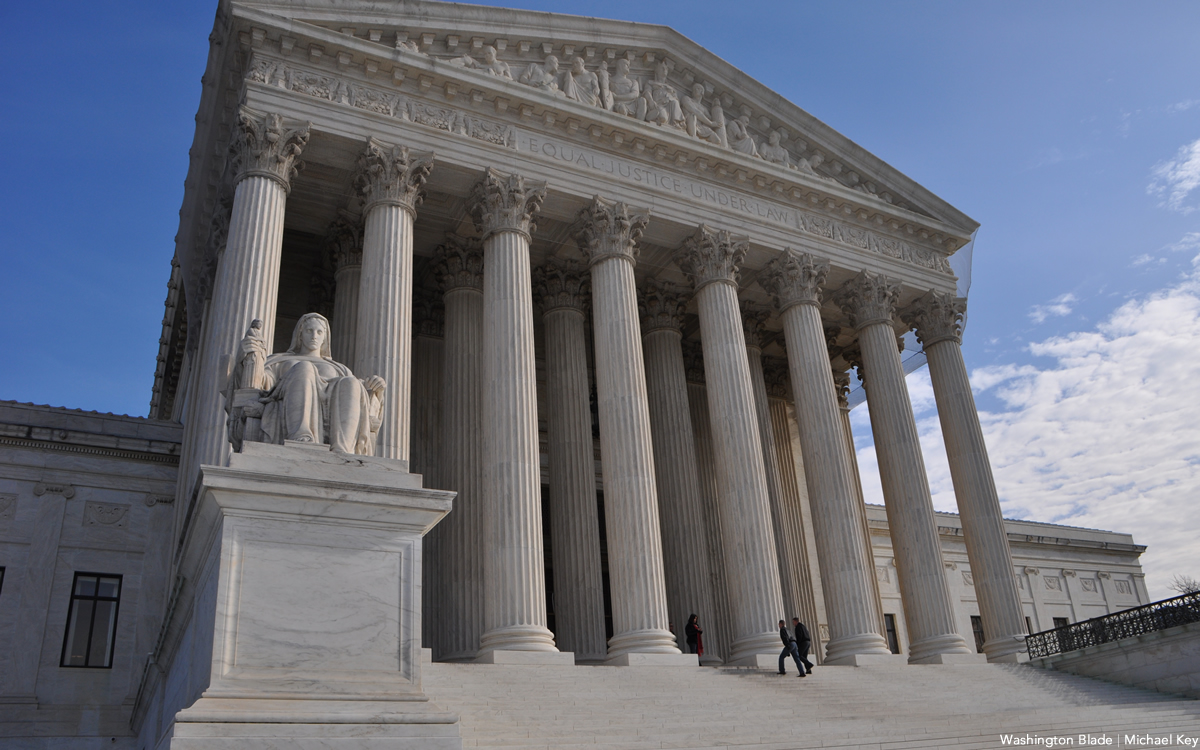
As soon as the final votes are cast and counted and verified after the November 2026 elections are over, the 2028 presidential cycle will begin in earnest. Polls, financial aid requests, and volunteer opportunities ad infinitum will flood the public and personal media. There will be more issues than candidates in both parties. The rending of garments and mudslinging will be both interesting and maybe even amusing as citizens will watch how candidates react to each and every issue of the day.
There is one particular item that I am hoping each candidate will be asked whether in private or in public. If a Supreme Court vacancy occurs in your potential administration, will you nominate an open and qualified LGBTQ to join the remaining eight?
Other interest groups on both sides have made similar demands over the years and have had them honored. Is it not time that our voices are raised as well? There are several already sitting judges on both state and federal benches that have either been elected statewide or approved by the U.S. Senate.
Our communities are being utilized and abused on judicial menus. Enough already! Challenge each and every candidate, regardless of their party with our honest question and see if honest answers are given. By the way … no harm in asking the one-third of the U.S. Senate candidates too who will be on ballots. Looking forward to any candidate tap dancing!
Opinions
2026 elections will bring major changes to D.C. government
Mayor’s office, multiple Council seats up for grabs
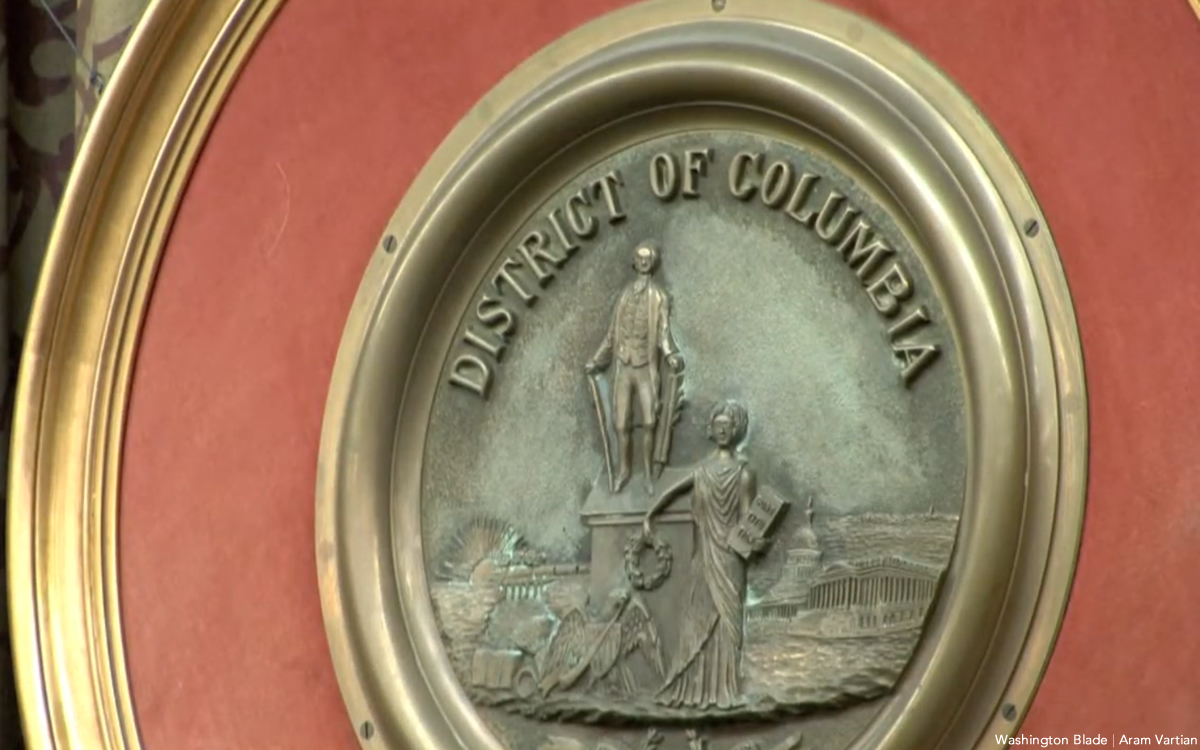
Next year will be a banner year for elections in D.C. The mayor announced she will not run. Two Council members, Anita Bonds, At-large, and Brianne Nadeau, Ward 1, have announced they will not run. Waiting for Del. Norton to do the same, but even if she doesn’t, there will be a real race for that office.
So far, Robert White, Council member at-large, and Brooke Pinto, Council member Ward 2, are among a host of others, who have announced. If one of these Council members should win, there would be a special election for their seat. If Kenyon McDuffie, Council member at-large, announces for mayor as a Democrat, which he is expected to do, he will have to resign his seat on the Council as he fills one of the non-Democratic seats there. Janeese George, Ward 4 Council member, announced she is running for mayor. Should she win, there would be a special election for her seat. Another special election could happen if Trayon White, Ward 8, is convicted of his alleged crimes, when he is brought to trial in January. Both the Council chair, and attorney general, have announced they are seeking reelection, along with a host of other offices that will be on the ballot.
Many of the races could look like the one in Ward 1 where at least six people have already announced. They include three members of the LGBTQ community. It seems the current leader in that race is Jackie Reyes Yanes, a Latina activist, not a member of the LGBTQ community, who worked for Mayor Fenty as head of the Latino Affairs Office, and for Mayor Bowser as head of the Office of Community Affairs. About eight, including the two Council members, have already announced they are running for the delegate seat.
I am often asked by candidates for an endorsement. The reason being my years as a community, LGBTQ, and Democratic, activist; and my ability to endorse in my column in the Washington Blade. The only candidate I endorsed so far is Phil Mendelson, for Council chair. While he and I don’t always agree on everything, he’s a staunch supporter of the LGBTQ community, a rational person, and we need someone with a steady hand if there really are six new Council members, out of the 13.
When candidates call, they realize I am a policy wonk. My unsolicited advice to all candidates is: Do more than talk in generalities, be specific and honest as to what you think you can do, if elected. Candidates running for a legislative office, should talk about what bills they will support, and then what new ones they will introduce. What are the first three things you will focus on for your constituents, if elected. If you are running against an incumbent, what do you think you can do differently than the person you hope to replace? For any new policies and programs you propose, if there is a cost, let constituents know how you intend to pay for them. Take the time to learn the city budget, and how money is currently being spent. The more information you have at your fingertips, the smarter you sound, and voters respect that, at least many do. If you are running for mayor, you need to develop a full platform, covering all the issues the city will face, something I have helped a number of previous mayors do. The next mayor will continue to have to deal with the felon in the White House. He/she/they will have to ensure he doesn’t try to eliminate home rule. The next mayor will have to understand how to walk a similar tightrope Mayor Bowser has balanced so effectively.
Currently, the District provides lots of public money to candidates. If you decide to take it, know the details. The city makes it too easy to get. But while it is available, take advantage of it. One new variable in this election is the implementation of rank-choice voting. It will impact how you campaign. If you attack another candidate, you may not be the second, or even third, choice, of their strongest supporters.
Each candidate needs a website. Aside from asking for donations and volunteers, it should have a robust issues section, biography, endorsements, and news. One example I share with candidates is my friend Zach Wahls’s website. He is running for United States Senate from Iowa. It is a comprehensive site, easy to navigate, with concise language, and great pictures. One thing to remember is that D.C. is overwhelmingly Democratic. Chances are the winner of the Democratic primary will win the general election.
Potential candidates should read the DCBOE calendar. Petitions will be available at the Board of Elections on Jan. 23, with the primary on June 16th, and general election on Nov. 3. So, ready, set, go!
Peter Rosenstein is a longtime LGBTQ rights and Democratic Party activist.
Opinions
Lighting candles in a time of exhaustion
Gunmen killed 15 people at Sydney Hanukkah celebration

In the wake of the shooting at Bondi Beach that targeted Jews, many of us are sitting with a familiar feeling: exhaustion. Not shock or surprise, but the deep weariness that comes from knowing this violence continues. It is yet another reminder that antisemitism remains persistent.
Bondi Beach is far from Washington, D.C., but antisemitism does not respect geography. When Jews are attacked anywhere, Jews everywhere feel it. We check on family and friends, absorb the headlines, and brace ourselves for the quiet, numbing normalization that has followed acts of mass violence.
Many of us live at an intersection where threats can come from multiple directions. As a community, we have embraced the concept of intersectional identity, and yet in queer spaces, many LGBTQ+ Jews are being implicitly or explicitly asked to play down our Jewishness. Jews hesitate before wearing a Magen David or a kippah. Some of us have learned to compartmentalize our identities, deciding which part of ourselves feels safest to lead with. Are we welcome as queer people only if we mute our Jewishness? Are those around us able to acknowledge that our fear is not abstract, but rooted in a lived reality, one in which our friends and family are directly affected by the rise in antisemitic violence, globally and here at home?
As a result of these experiences, many LGBTQ+ Jews feel a growing fatigue. We are told, implicitly or explicitly, that our fear is inconvenient; that Jewish trauma must be contextualized, minimized, or deferred in favor of other injustices. Certainly, the world is full of horror. And yet, we long for a world in which all lives are cherished and safe, where solidarity is not conditional on political purity or on which parts of ourselves are deemed acceptable to love.
We are now in the season of Chanuka. The story of this holiday is not one of darkness vanishing overnight. It is the story of a fragile light that should not have lasted. Chanuka teaches us that hope does not require certainty; it requires persistence and the courage to kindle a flame even when the darkness feels overwhelming.
For LGBTQ+ Jews, this lesson resonates deeply. We have survived by refusing to disappear across multiple dimensions of our identities. We have built communities, created rituals, and embraced chosen families that affirm the fullness of who we are.
To our LGBTQ+ siblings who are not Jewish: this is a moment to listen, to stand with us, and to make space for our grief. Solidarity means showing up not only when it is easy or popular, but especially when it is uncomfortable.
To our fellow Jews: your exhaustion is valid. Your fear is understandable, and so is your hope. Every candle lit this Chanuka is an act of resilience. Every refusal to hide, every moment of joy, is a declaration that hatred will not have the final word.
Light does not deny darkness. It confronts it.
As we light our candles this Chanuka season, may we protect one another and bring light to one another, even as the world too often responds to difference with violence and hate.
Joshua Maxey is the executive director of Bet Mishpachah, D.C.’s LGBTQ synagogue.

